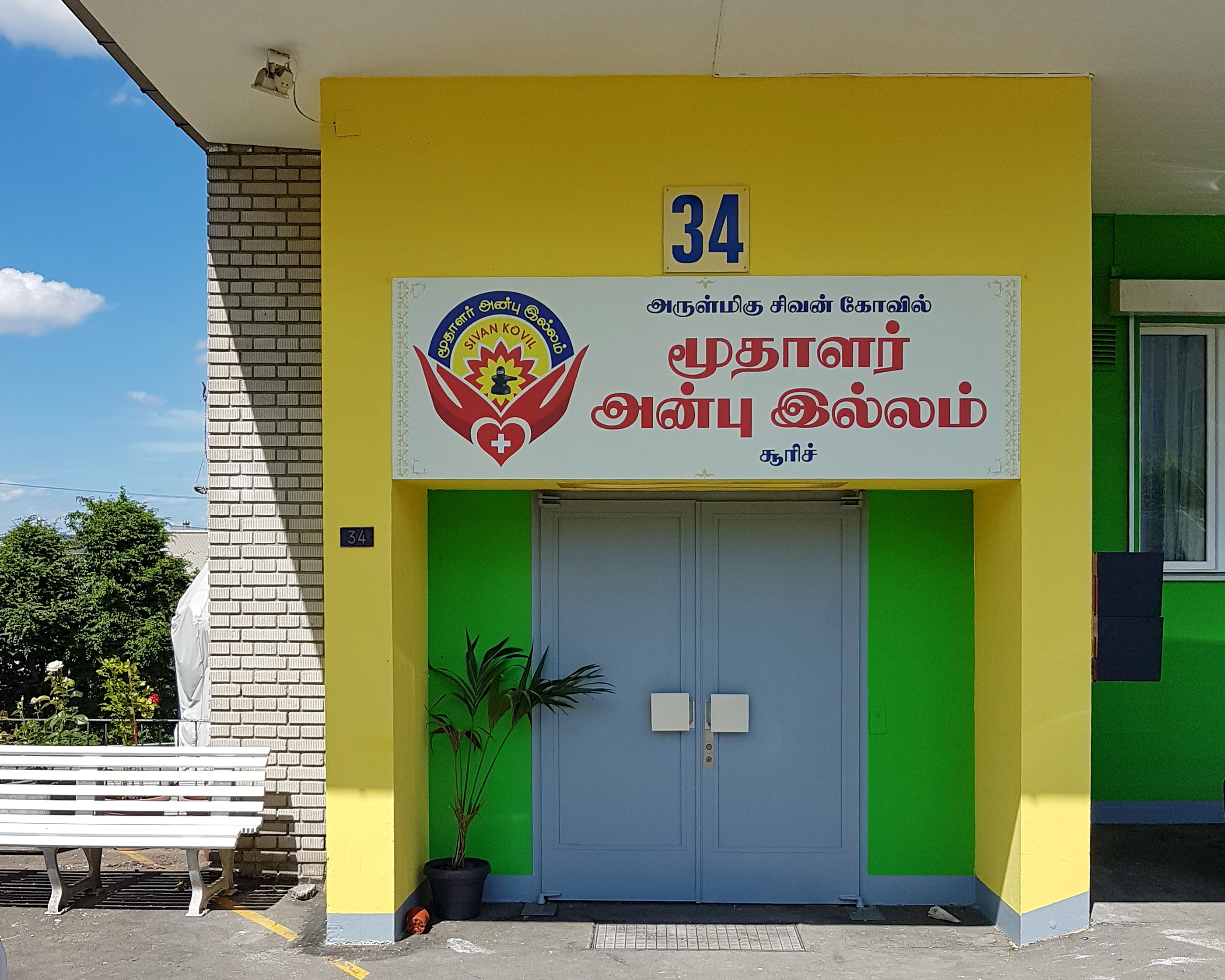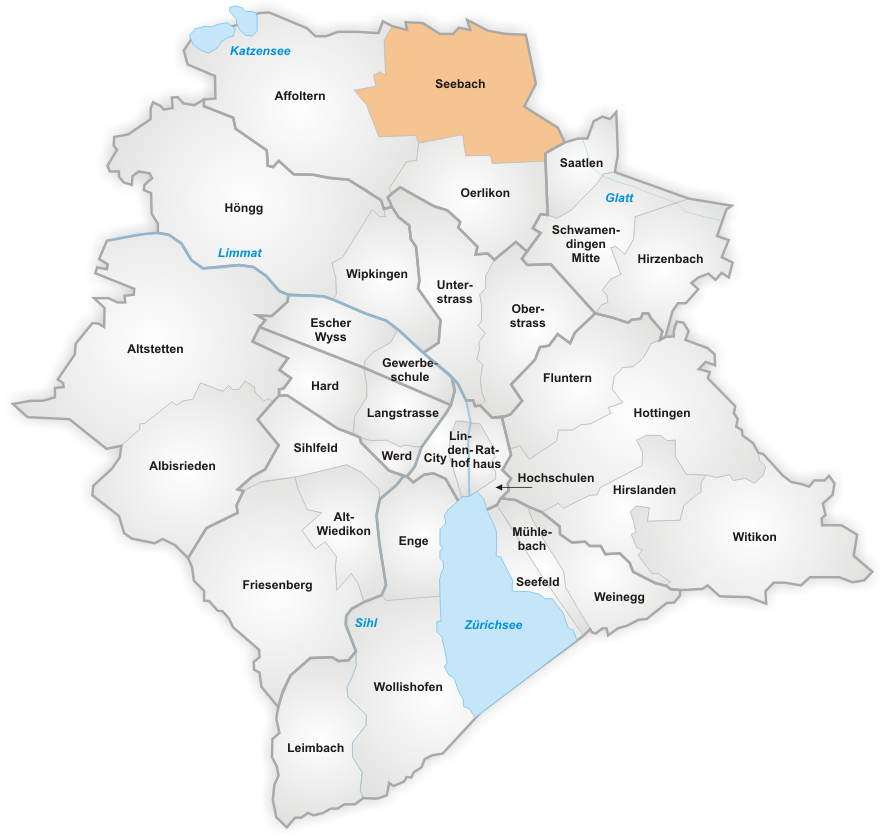|
Glattbrugg
Opfikon (; in the local Swiss German dialect: )Andres Kristol/Gabrielle Schmid, ''Opfikon ZH (Bülach)'' in: ''Dictionnaire toponymique des communes suisses – Lexikon der schweizerischen Gemeindenamen – Dizionario toponomastico dei comuni svizzeri (DTS, LSG)'', Centre de dialectologie, Université de Neuchâtel, Verlag Huber, Frauenfeld/Stuttgart/Wien 2005, and Éditions Payot, Lausanne 2005, , p. 680f. is the name of a municipality in the Swiss canton of Zürich, located in the district of Bülach. Coat of arms Blazon: ''Party per fess gules and argent, in chief a half length portrait of a man wearing a coat sable with a white collar, in base cross pattee sable.'' Geography Opfikon is situated right to the northeast of the city of Zürich in the Glatt Valley, near Zurich Airport, and thus lies within the greater Zürich area. As it belongs to the region known as the Zurichois Lowlands ''(Zürcher Unterland)'', the landscape is rather flat. The lowest point lies 420.4 ... [...More Info...] [...Related Items...] OR: [Wikipedia] [Google] [Baidu] |
Arulmihu Sivan Temple
The Arulmiku Sivan Temple is a Hindu temple located in the Municipalities of the canton of Zürich, municipality of Glattbrugg in the Canton of Zürich in Switzerland. History In the 1990s, an interreligious society was established in the canton of Zürich to support the foundation of a centre for spiritual and cultural care of Tamil people in Switzerland, as well as to preserve and maintain the Tamil culture of the approximatively 35,000 (around 20,000 in the canton of Zürich) Tamil people of Sri Lankan origin living in Switzerland. So, the Sri Sivasubramaniar Temple in Adliswil and the Arulmiku Sivan Temple in Glattbrugg were founded in 1994 as a Foundation (nonprofit organization), non-profit foundation. While some 5,000 Indian Hindus in Switzerland founded their own cultural associations, but not a temple, the Tamil Hindus opened 19 houses of worship since the 1990s. Location The temple was established in a pre-existing warehouse at the industry quarter between Glattbrugg ... [...More Info...] [...Related Items...] OR: [Wikipedia] [Google] [Baidu] |
Glatt Valley
The Glatt Valley (German: ''Glattal'' or ''Glatttal'') is a region and a river valley in the canton of Zürich in Switzerland. Geography The Glatt (Rhine), Glatt is a tributary to the Rhine in the Zürcher Unterland area of the canton of Zurich. It is long and flows out from the Greifensee (lake), Greifensee through its river valley A valley is an elongated low area often running between hills or mountains and typically containing a river or stream running from one end to the other. Most valleys are formed by erosion of the land surface by rivers or streams over a ..., discharging into the Rhine by Rheinsfelden. The Region Glatttal comprises, among other communities in the districts of Uster (district), Uster, Dielsdorf (district), Dielsdorf and Bülach (district), Bülach, the suburban cities and municipalities of Bassersdorf, Bülach, Dietlikon, Dübendorf, Fällanden, Glattfelden, Höri, Kloten, Oberglatt, Opfikon-Glattbrugg, Rümlang, Schwerzenbach, Wallisell ... [...More Info...] [...Related Items...] OR: [Wikipedia] [Google] [Baidu] |
Zurich Airport
Zurich Airport is the largest international airport of Switzerland and the airline hub, principal hub of Swiss International Air Lines. It serves Zurich, the largest city in Switzerland, and, with its surface transport links, much of the rest of the country. The airport is located north of central Zurich, in the municipalities of Kloten, Rümlang, Oberglatt, Winkel, Switzerland, Winkel, and Opfikon, all of which are within the canton of Zurich. History Early years In the Zurich area, mixed civil and military air traffic developed from 1909 onwards at Dübendorf Air Base, Dübendorf airfield, northeast of the city. From 1919, the airport was home to Swissair's predecessor , and from 1932 also to Swissair. The first regular international flight service began on 1 June 1922 with an Ad Astra route to Fürth, Germany. In the early years of aviation, the Dübendorf Air Base, located around southeast of Zurich Airport, also served as the city's commercial airfield. The need for a ded ... [...More Info...] [...Related Items...] OR: [Wikipedia] [Google] [Baidu] |
Glatt (Rhine)
Glatt () is the name of a lesser affluent to the High Rhine in the Unterland of the canton of Zurich, Switzerland. It is long and flows out from the Greifensee through the Glatt Valley, discharging into the Rhine by Glattfelden. Whereas the upper reaches are only gently inclined, the stream gets steeper beneath, forming banks of bed load. Name and History The earliest mention of the Glatt ''(fluvii, qui dicitur glat)'' dates to 1034. The hydronym reflects the (feminine) OHG adjective ''glat'', meaning either "bright, clear" or "plane, smooth".Gabrielle Schmid/Andres Kristol, ''Niederglatt ZH (Dielsdorf)'' in: ''Dictionnaire toponymique des communes suisses – Lexikon der schweizerischen Gemeindenamen – Dizionario toponomastico dei comuni svizzeri (DTS, LSG)'', Centre de dialectologie, Université de Neuchâtel, Verlag Huber, Frauenfeld/Stuttgart/Wien 2005, and Éditions Payot, Lausanne 2005, , p. 646. Since the 15th century, the Glatt had been subject to the sovereig ... [...More Info...] [...Related Items...] OR: [Wikipedia] [Google] [Baidu] |
Rümlang
Rümlang is a Municipalities of Switzerland, municipality in the district of Dielsdorf (district), Dielsdorf in the Cantons of Switzerland, canton of Zurich (canton), Zürich in Switzerland, and belongs to the Glatt Valley (German: ''Glattal''). Zurich Airport is partially located in Rümlang. Geography Rümlang has an area of . Of this area, 51.6% is used for agricultural purposes, while 22.8% is forested. Of the rest of the land, 23.9% is settled (buildings or roads) and the remainder (1.7%) is non-productive (rivers, glaciers or mountains). Demographics Rümlang has a population (as of ) of . , 25.2% of the population was made up of foreign nationals. Over the last 10 years the population has grown at a rate of 16.3%. Most of the population () speaks German (83.5%), with Italian being second most common ( 4.7%) and Albanian being third ( 2.1%). In the 2019 Swiss federal election, the most popular party was the Swiss People's Party, SVP which received 41.6% of the vote. ... [...More Info...] [...Related Items...] OR: [Wikipedia] [Google] [Baidu] |
Seebach (Zürich)
Seebach () is a quarter in the district 11 (Zürich), district 11 of Zürich, located in the Glatt Valley (German: ''Glattal''). It was formerly a municipality in its own right, but was incorporated into the city of Zürich in 1934. In contrast to the inner-city neighborhoods, Zürich-Seebach is known as an area with a vast number of immigrants, in particular from Turkey, Albania, Syria, Eritrea, Bosnia and Herzegovina, Bosnia and Sri Lanka. The area is also known for some social housing projects. Areas with similar ethnic compositions exist in suburban areas around Zürich as well, like Schlieren, Switzerland, Schlieren or Dietikon where immigrants form the majority of the population. The quarter has a population of 19,879 distributed on an area of . Transportation Zürich Seebach railway station is a stop on service S6 (ZVV), S6 of the Zürich S-Bahn, which provides a half-hourly connection to Zürich Oerlikon railway station, Zürich Oerlikon and Zürich Hauptbahnhof rai ... [...More Info...] [...Related Items...] OR: [Wikipedia] [Google] [Baidu] |
Fachhochschule
A (; plural ), abbreviated FH, is a university of applied sciences (UAS), in other words a Hochschule, German tertiary education institution that provides professional education in many applied sciences and applied arts, such as engineering, technology, business, architecture, design, and industrial design. were first founded in Germany and were later adopted in Austria, Liechtenstein, Switzerland, Cyprus, and Greece. An increasing number of are abbreviated as ''Hochschule'', the generic term in Germany for institutions awarding academic degrees in higher education, or expanded as ''Hochschule für angewandte Wissenschaften (HAW)'', the German translation of "universities of applied sciences", which were primarily designed with a focus on teaching professional skills. This is reflected in the fact that the ratio of the number of students to the number of professors is significantly better than at traditional universities. However, there are also a number of subjects, such as s ... [...More Info...] [...Related Items...] OR: [Wikipedia] [Google] [Baidu] |
Education In Switzerland
The education system in Switzerland is very diverse, because the constitution of Switzerland delegates the authority for the school system mainly to the Canton of Switzerland, cantons. The Swiss constitution sets the foundations, namely that primary school is obligatory for every child and is free in state schools and that the confederation can run or support universities. The minimum age for primary school is about six years in all cantons but Obwalden, where it is five years and three months. After primary schools, the pupils split up according to their abilities and intentions of career paths. Roughly 25% of all students attend lower and upper secondary schools leading, normally after 12 school years in total to the federal recognized matura or an academic International Baccalaureate, Baccalaureate which grants access to all universities. The other students split in two or more school-types, depending on the canton, differing in the balance between theoretical and practical e ... [...More Info...] [...Related Items...] OR: [Wikipedia] [Google] [Baidu] |
Municipality
A municipality is usually a single administrative division having municipal corporation, corporate status and powers of self-government or jurisdiction as granted by national and regional laws to which it is subordinate. The term ''municipality'' may also mean the governing body of a given municipality. A municipality is a general-purpose administrative subdivision, as opposed to a special district (United States), special-purpose district. The English language, English word is derived from French language, French , which in turn derives from the Latin language, Latin , based on the word for social contract (), referring originally to the Latin communities that supplied Rome with troops in exchange for their own incorporation into the Roman state (granting Roman citizenship to the inhabitants) while permitting the communities to retain their own local governments (a limited autonomy). A municipality can be any political jurisdiction (area), jurisdiction, from a sovereign state s ... [...More Info...] [...Related Items...] OR: [Wikipedia] [Google] [Baidu] |
Constitution
A constitution is the aggregate of fundamental principles or established precedents that constitute the legal basis of a polity, organization or other type of entity, and commonly determines how that entity is to be governed. When these principles are written down into a single document or set of legal documents, those documents may be said to embody a ''written constitution''; if they are encompassed in a single comprehensive document, it is said to embody a ''codified constitution''. The Constitution of the United Kingdom is a notable example of an ''uncodified constitution''; it is instead written in numerous fundamental acts of a legislature, court cases, and treaties. Constitutions concern different levels of organizations, from sovereign countries to companies and unincorporated associations. A treaty that establishes an international organization is also its constitution, in that it would define how that organization is constituted. Within states, a constitution ... [...More Info...] [...Related Items...] OR: [Wikipedia] [Google] [Baidu] |
Cantons Of Switzerland
The 26 cantons of Switzerland are the Federated state, member states of the Switzerland, Swiss Confederation. The nucleus of the Swiss Confederacy in the form of the first three confederate allies used to be referred to as the . Two important periods in the development of the Old Swiss Confederacy are summarized by the terms ('Eight Cantons'; from 1353 to 1481) and ('Thirteen Cantons', from 1513 to 1798).rendered "the 'confederacy of eight'" and "the 'Thirteen-Canton Confederation'", respectively, in: Each canton of the Old Swiss Confederacy, formerly also ('lieu/locality', from before 1450), or ('estate', from ), was a fully sovereignty, sovereign state with its own border controls, army, and currency from at least the Treaty of Westphalia (1648) until the establishment of the Swiss federal state in 1848, with a brief period of centralised government during the Helvetic Republic (1798–1803). The term has been widely used since the 19th century. "" The number of canton ... [...More Info...] [...Related Items...] OR: [Wikipedia] [Google] [Baidu] |





